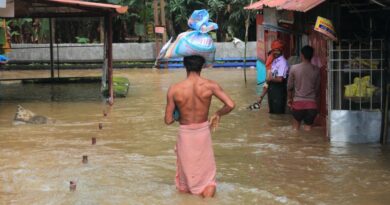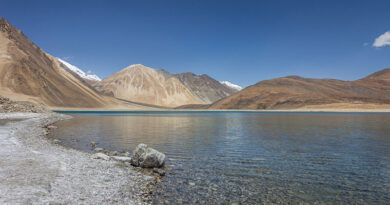Glacier retreat likely to cause water shortages in the Ganga basin

An increase in wintertime temperatures in the Himalayas is leading to erosion of glacial areas and could cause water shortages in the Ganga basin in coming decades, a new study by a team of Indian scientists has warned.
Between 1969 and 2020, over 50 sq km of Himalayan glacier area have been lost in the Alaknanda River basin, the main contributor to the Ganga. An annual 0.03C wintertime temperature increase is the reason, said the study, which found that the number of glaciers increased from 98 to 116 as bigger glaciers broke into smaller ones.
As a result of the changing landscape, water is now flowing through different paths which do not contribute to the Gang ad a River. These new water paths are decreasing the water flow of the river and these new bodies of water may overflow if the glaciers’ melting speed increases, which increases the risk of floods.
The average retreat rate of glaciers in the basin was 11.7 metres per year. According to the analysis of climatic parameters in the basin, there is substantial evidence of deglaciation due to global warming, especially since the winter temperature increased by 0.03 degrees Celsius per year between 1968 and 2020.
The team of scientists are Remya S N and Anil V Kulkarni, scientists from the Divecha Centre for Climate Change, IISc in Bengaluru; Tajdarul Hassan Syed, associate professor, Department of Earth Sciences, IIT-Kanpur; and R Anand from the Department of Applied Geology, IIT-Dhanbad. The team did an analysis of satellite images as well as field observations. The satellite data was provided by the United States Geological Survey.
The glaciers are melting faster and forming new water bodies such as lakes near the glacier. “If the glaciers melt faster in the future, these water bodies will get added water and may overflow, causing destruction”, Remya was quoted as saying in news reports.
“Glaciers are like trees, with many branches coming out of them. In the Alaknanda river basin, we found that many extended portions of the glaciers got separated from the main glacier, mainly because of climatic reasons. This increased the number of glaciers in the area”.
The scientists found that along with the reduction in the glacier area, the Alaknanda River basin also witnessed an increase in the formation of debris cover, which is another factor reducing water flow in the Ganga.
A 2019 discussion paper on climate change impacts on Himalayan glaciers by TERI had stated that climate change has strong influence on the precipitation over Himalayas as well as melting response of glaciers/ snow cover in Himalayas. “This in turn affects the runoff pattern of rivers draining from the glaciated catchments of Himalayas. Three major river catchments along with their several tributaries originating from Indian as well as Nepal part of Himalayas, receive significant contribution from Himalayan cryosphere, especially during the non-rainfall lean period of the year.
“These rivers support the life and livelihood of more than 500 million people living downstream in Indo-Gangetic plains, but also support several industries located in these plains.
Simultaneously, Himalayan rivers are also responsible for ensuring energy security of the country, due to their role in supporting the production of both hydro as well as thermal electricity through dams/ power plants located in the Indogangetic plains. It is estimated that almost 1/3rd of India’s electricity production capacity is located in these plains, and any variability in flow pattern of Himalayan rivers can have far-reaching consequences for energy security”.



